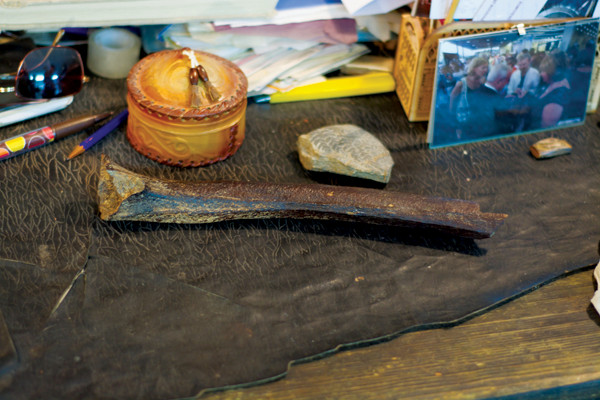
by Timothy Oleson Monday, January 5, 2015

The Ust'-Ishim femur belonged to a modern human man who lived in western Siberia roughly 45,000 years ago. Credit: Bence Viola, MPI EVA.
A chance fossil find along a Russian river has provided researchers with the oldest genomic data ever sequenced from a modern human. The fossil, a nearly complete left femur, was pulled from a bank along the Irtysh River near the Ust’-Ishim district in western Siberia in 2008 by a Russian artist before it made its way to scientists.
Radiocarbon dating, isotopic studies and genomic sequencing revealed that the bone belonged to a male who subsisted on a hunter-gatherer’s diet of plants and meat about 45,000 years ago. In addition to offering the oldest modern human genome studied, the find represents the oldest modern human from outside of Africa and the Middle East to be radiocarbon dated.
An international team led by Svante Pääbo and Janet Kelso of the Max Planck Institute in Germany reported in Nature that about 2 percent of the Ust’-Ishim genome had come from Neanderthals — roughly the same proportion that is seen in modern Eurasians. However, the lengths of the residual Neanderthal segments are longer than those found in populations today and in more recent fossil humans, attesting to the Ust’-Ishim man’s closer ties to ancestors who had mated with Neanderthal neighbors.
Based on comparisons of their results to existing fossil finds and prevailing theories for early modern human expansions, the team suggested that the Ust’-Ishim individual was likely related to “an early modern human radiation [from Africa roughly 50,000 years ago] into Europe and Central Asia that may have failed to leave any descendants among present-day populations.” This radiation may have been distinct, they noted, from other, previously proposed migrations.
© 2008-2021. All rights reserved. Any copying, redistribution or retransmission of any of the contents of this service without the expressed written permission of the American Geosciences Institute is expressly prohibited. Click here for all copyright requests.